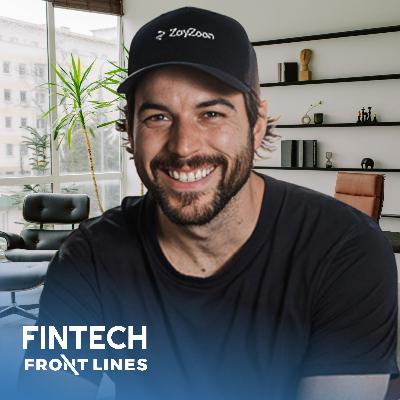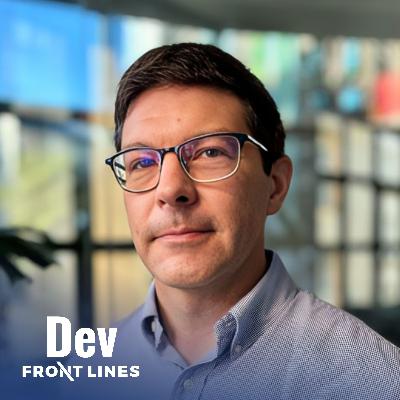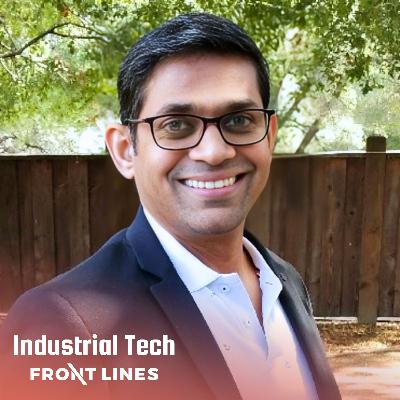TwelveLabs is building purpose-built foundation models for video understanding, enabling enterprises to index, search, and analyze petabytes of video content at scale. Founded by three technical co-founders who met in South Korea's Cyber Command doing multimodal video understanding research, the company recognized early that video requires fundamentally different infrastructure than text or image AI. Now achieving 10x revenue growth and serving customers across media, entertainment, sports, advertising, and federal agencies, TwelveLabs is proving that category creation through extreme focus beats trend chasing. In this episode, Jae Lee shares how the company navigated early product decisions, built specialized GTM motions for established industries, and maintained technical conviction during years of building in relative obscurity.
Topics Discussed:
How military research in multimodal video understanding led to founding TwelveLabs in 2020
The technical thesis: why video deserves purpose-built foundation models and inference infrastructure
Targeting video-centric industries where ROI justifies early-stage pricing: media, entertainment, sports, advertising, and defense
Partnership-driven distribution strategy and AWS Bedrock integration results
Specialized sales approach: generalist leaders, vertical-specific AEs and solutions architects Maintaining extreme focus and avoiding hype cycles during the first three years of building
Federal GTM lessons: why In-Q-Tel partnership and authentic mission alignment matter more than process optimization
The discipline of saying no to large opportunities that don't fit ICP
Keeping hiring bars high when the entire team is underwater
GTM Lessons For B2B Founders:
Hire vertical specialists on the front lines, not just at the top: TwelveLabs structures its GTM team with generalist leaders (head of GTM and VP of Revenue) who can sell any technology, but vertical-specialized AEs, solutions architects, and deployment engineers. These front-line team members come directly from the four target industries and understand customer workflows, buying patterns, and integration points without ramp time. For founders entering mature markets with established tech stacks and complex procurement, this inverted model—generalist strategy, specialist execution—accelerates deal velocity because technical buyers immediately recognize domain fluency.
Infrastructure plays require integration partnerships, not displacement: In established industries with layered technology stacks, positioning as foundational infrastructure demands partnership-first distribution. Jae explained their approach: integration with media-specific GSIs, media asset management platforms, and cloud providers ensures TwelveLabs fits into existing workflows rather than forcing wholesale replacement. This is particularly critical for selling into industries like media and entertainment where technology decisions involve multiple stakeholders across production, post-production, and distribution. The AWS Bedrock integration delivered 30,000+ enterprise agreements in seven weeks—a distribution velocity impossible through direct sales alone.
Extreme focus on first-principles product development beats fast-follower tactics: While competitors built quick demos by wrapping existing models, TwelveLabs spent three years building proprietary video foundation models and indexing infrastructure from scratch. Jae was explicit about the cost: "It was painful journey in the first like two and a half, three years because folks are flying by." The payoff came from solving actual customer problems—indexing 2 million hours of content in two days, enabling semantic search at scale, building agent workflows for specific use cases—rather than impressive demos that couldn't handle production workloads. For technical founders, this validates staying committed to fundamental research even when market momentum favors surface-level innovation.
Federal requires cultural alignment before GTM optimization: TwelveLabs' federal success stems from authentic mission alignment, not just process execution. With In-Q-Tel as an investor providing interface to agencies and founders with military backgrounds, the company established credibility through shared values rather than sales tactics. Jae was direct: "If you're kind of entering because, oh, federal market is big and you go in, you're going to get your butt kicked. So I think like you need to actually build your team in a way that's like passionate to work on this project." This matters because federal deals require sustained engagement through long sales cycles, security reviews, and deployment complexity—momentum that only comes from genuine conviction, not quota pressure.
ICP discipline protects product focus and team morale: Saying no to large early opportunities that don't fit ICP is operationally painful but strategically essential. Jae acknowledged the difficulty: "Early on saying no to customers is hard... as a founder you want to grow your business and you know that's going to be good for the morale. But that's only true when the customers are actually their ideal customers." Wrong customers create three failure modes: they pull product roadmap toward one-off features, they consume disproportionate support resources, and they generate reference cases that attract more wrong-fit prospects. For early-stage infrastructure companies, every customer shapes your market position—choose deliberately.
//
Sponsors: Front Lines — We help B2B tech companies launch, manage, and grow podcasts that drive demand, awareness, and thought leadership. www.FrontLines.io
The Global Talent Co. — We help tech startups find, vet, hire, pay, and retain amazing marketing talent that costs 50-70% less than the US & Europe. www.GlobalTalent.co
//
Don't Miss: New Podcast Series — How I Hire Senior GTM leaders share the tactical hiring frameworks they use to build winning revenue teams. Hosted by Andy Mowat, who scaled 4 unicorns from $10M to $100M+ ARR and launched Whispered to help executives find their next role.
Subscribe here: https://open.spotify.com/show/53yCHlPfLSMFimtv0riPyM

























